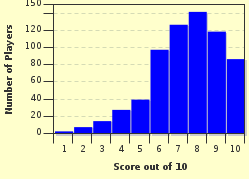Quiz Answer Key and Fun Facts
1. A training program was developed for miniature horses to assist in guiding visually impaired people. What is the name of this non-profit charity program?
2. What is the primary reason a person may choose a miniature horse to a guide dog?
3. Which objects and shapes are difficult for a guide horse to perceive?
4. What is an advantage of a Seeing Eye dog to a guide horse in public businesses?
5. What is the principle for placing sneakers or rubber shoes on a guide horse?
6. In comparison to a Seeing Eye dog, a horse is more apt to do this when encountered with any unexpected commotion.
7. The Guide Horse Foundation program is prohibited in taking possession of a guide horse after being placed with a visually impaired person.
8. A guide horse is not compatible with other animals, therefore, a blind handler is not allowed to have other pets.
9. When a horse feels threatened, its first instinct is to take which of these actions?
10. The Board of the National Association of Guide Dog Users is thrilled about the mobility option that The Guide Horse Foundation program offers.
Source: Author
lilady
This quiz was reviewed by FunTrivia editor
crisw before going online.
Any errors found in FunTrivia content are routinely corrected through our feedback system.

